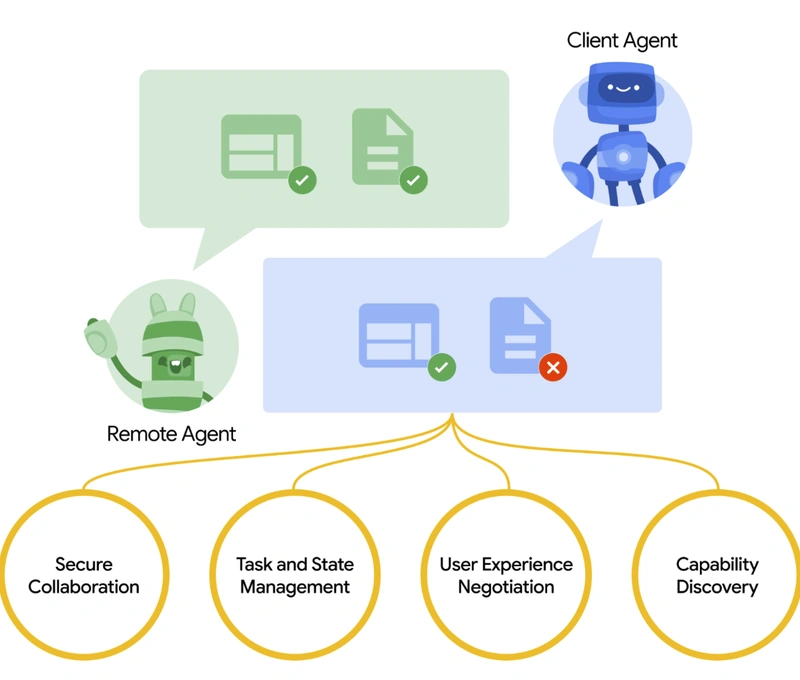AI Agents: The Future of Intelligent Autonomy
"AI Agents" category that could be used as a foundational article in your blog or knowledge hub.

🔍 What Are AI Agents?
An AI agent is a system that perceives its environment, processes information, and takes actions to achieve specific goals. Unlike traditional AI models that produce a response to an input (like answering a question or labeling an image), AI agents are autonomous decision-makers. They are designed to interact, reason, plan, and learn — often in real-time and complex environments.
In simple terms:
An AI agent is like a smart assistant that doesn’t wait for your next command—it proactively works toward a goal.
🧩 Core Components of an AI Agent
AI agents typically include:
- Perception module: Gathers information from the environment (via sensors, APIs, databases, etc.).
- Reasoning engine: Makes decisions based on logic, probabilities, or rules.
- Planning module: Breaks down tasks and sequences actions.
- Memory/state tracking: Maintains context or history to inform future actions.
- Actuation: Executes actions (like sending emails, writing code, trading stocks, or navigating robots).
Some agents are reactive (they respond to immediate stimuli), while others are deliberative (they plan ahead based on a model of the world).
🛠️ Types of AI Agents
Depending on their design and capabilities, AI agents can be classified into several types:
- Simple Reflex Agents: Respond directly to specific inputs using condition-action rules. (E.g., thermostats)
- Model-Based Agents: Use an internal model of the environment to plan future actions.
- Goal-Based Agents: Make decisions to reach predefined goals.
- Utility-Based Agents: Optimize for the best outcome based on a utility function.
- Learning Agents: Adapt and improve through experience (via machine learning).
Real-World Examples:
- ChatGPT with tools: Can search the web, read PDFs, or generate code—making it more than just a chatbot.
- AutoGPT/Agentic workflows: Execute complex business tasks like market research or customer onboarding with minimal supervision.
- Robotic Process Automation (RPA): AI-enhanced bots handling invoices or customer support tickets.
🚀 The Rise of Agentic Workflows
The real breakthrough in AI agents came with the agentic AI movement, where autonomous agents are embedded into multi-step workflows to achieve high-level tasks.
Examples:
- An AI agent that books your travel by comparing flight prices, syncing calendars, and handling payments.
- A coding agent that builds entire web apps based on a prompt.
- A sales agent that finds leads, sends emails, and follows up based on CRM data.
These agents chain together reasoning, external tools, memory, and feedback loops — making them feel almost human-like in how they operate.
🧠 AI Agents vs Traditional AI Models
Feature Traditional AI Model AI Agent Input-Output Model Yes No (acts autonomously) Goal-Oriented No Yes Memory/State Limited or None Persistent and Contextual Autonomy Low High Real-time Decisioning Rare Common In essence, AI agents embody intelligence, rather than just simulate it in isolated tasks.
🔐 Risks and Challenges
AI agents open new frontiers—but also new risks:
- Autonomy without oversight: Can make unverified decisions.
- Security vulnerabilities: Agents acting on external data may be misled or manipulated.
- Alignment problems: Agents optimizing the wrong goal can cause unintended harm.
- Resource usage: Agents require significant compute and orchestration.
Developers and organizations must invest in guardrails, human-in-the-loop designs, and ethical AI frameworks.
🧭 The Future: Agent Ecosystems
Imagine a future workplace where AI agents:
- Coordinate meetings based on goals, not availability.
- Manage your inbox, prioritizing and responding as needed.
- Collaborate with other agents from partner companies or services.
These agent ecosystems will enable decentralized intelligence where agents interact, trade knowledge, negotiate, and solve problems together — often faster and more efficiently than humans.
We're already seeing early versions in platforms like:
- OpenAI’s GPTs (customizable agents with tools and memory),
- LangChain/AutoGen frameworks,
- MetaGPT, BabyAGI, CrewAI, and others.
💡 Final Thoughts
The AI agent revolution is just beginning. As we shift from models to autonomous, collaborative agents, the opportunities (and responsibilities) grow exponentially. From personal assistants and automated workflows to full-fledged digital teammates, AI agents will fundamentally reshape how we live, work, and create.
Want to prepare for an agentic future? Start exploring:
- How to design agent prompts.
- Integrating APIs and tools into AI workflows.
- Guardrails, validation, and safety for autonomous actions.
- Multi-agent communication protocols.
Let’s build a future where agents empower—not replace—human creativity, productivity, and purpose.
Would you like a shorter version, a LinkedIn post summary, or a version optimized for SEO or a specific audience (like devs or product managers)?